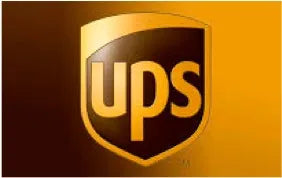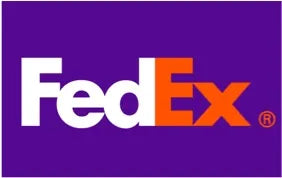If you are a manufacturer or importer of products in the EU or UK market, you may have come across the term CE marking. It is a mandatory requirement for certain products to bear the CE marking before they can be sold in the European Economic Area (EEA) and the UK market. In this blog post, we will discuss what CE marking is, its requirements, products that require CE marking, how to get CE marking, when it's not required, consequences of non-compliance, and the benefits of CE marking.
Table of contents:
· What is CE Marking?
· CE Marking in EU and UK
· CE Marking Requirements
· Products Requiring CE Marking
· How to Get CE Mark?
· When is CE Marking not Required?
· What if Products without CE Mark?
· Will the USA Accept CE Mark?
· What're Benefits of CE Mark?
I、What is CE Marking?
CE marking is a conformity marking that signifies the product meets the essential health, safety, and environmental protection requirements set by the EU legislation. It is mandatory for certain products sold in the EEA and UK markets. CE marking is not a quality or performance mark but only a declaration by the manufacturer that the product complies with the essential requirements of the applicable EU harmonized legislation.
II、CE Marking in EU and UK
CE marking is mandatory for products sold in the EEA and UK markets. It is recognized as a conformity assessment mark for the products sold in the EEA, including EU member states, Iceland, Liechtenstein, Norway, and Switzerland. In the UK, CE marking was replaced by the UKCA (UK Conformity Assessed) marking for certain products from January 1, 2021. However, CE marking is still valid for the products that were placed on the market before this date.
III、CE Marking Requirements
To obtain CE marking, manufacturers must ensure their products comply with the essential requirements of the relevant EU harmonized legislation. They must carry out conformity assessment procedures to verify their products' compliance and issue a declaration of conformity. The conformity assessment procedure depends on the product's risk level and type, and it can be self-assessment or involve a notified body.
IV、Products Requiring CE Marking
CE marking is mandatory for products listed in the EU harmonized legislation. The list of products requiring CE marking is extensive and covers various industries, such as machinery, medical devices, toys, personal protective equipment, construction products, electrical and electronic equipment, and pressure equipment, among others.
Machinery: CE marking is required for machinery and safety components intended to be used in machinery, such as brakes, electrical controls, and safety guards. The machinery must comply with the Machinery Directive (2006/42/EC) and undergo a conformity assessment procedure.
Medical devices: CE marking is mandatory for medical devices intended for human use, such as pacemakers, dental implants, and diagnostic equipment. The medical devices must comply with the Medical Devices Directive (MDR 2017/745) or the In-Vitro Diagnostic Medical Devices Regulation (IVDR 2017/746) and undergo a conformity assessment procedure.
Toys: CE marking is required for toys intended for use by children under the age of 14. The toys must comply with the Toy Safety Directive (2009/48/EC) and undergo a conformity assessment procedure.
Personal protective equipment (PPE): CE marking is mandatory for PPE intended for use in the workplace, such as helmets, gloves, and safety shoes. The PPE must comply with the Personal Protective Equipment Regulation (EU) 2016/425 and undergo a conformity assessment procedure.
Construction products: CE marking is required for construction products intended for use in the construction of buildings and civil engineering works, such as doors, windows, and roofing materials. The construction products must comply with the Construction Products Regulation (EU) 305/2011 and undergo a conformity assessment procedure.
Electrical and electronic equipment: CE marking is mandatory for electrical and electronic equipment, such as household appliances, lighting, and computers. The equipment must comply with the Low Voltage Directive (2014/35/EU) and the Electromagnetic Compatibility Directive (2014/30/EU) and undergo a conformity assessment procedure.
Pressure equipment: CE marking is required for pressure equipment, such as boilers, pressure vessels, and gas cylinders. The pressure equipment must comply with the Pressure Equipment Directive (2014/68/EU) and undergo a conformity assessment procedure.
In conclusion, CE marking is mandatory for products listed in the EU harmonized legislation. Manufacturers must ensure their products comply with the essential requirements of the applicable directives and undergo a conformity assessment procedure to obtain CE marking. The list of products requiring CE marking is extensive and covers various industries, such as machinery, medical devices, toys, personal protective equipment, construction products, electrical and electronic equipment, and pressure equipment, among others.
V、How to Get CE Mark?
To obtain CE marking, manufacturers must follow the conformity assessment procedures specified in the relevant EU harmonized legislation. They must identify the applicable directives, assess the product's conformity, and draw up technical documentation. Depending on the product's risk level and type, the conformity assessment procedure can involve a notified body, which issues a conformity assessment certificate. Once the manufacturer has obtained the necessary documentation, they can affix the CE marking on the product.
VI、When is CE Marking not Required?
CE marking is not mandatory for products that are not listed in the EU harmonized legislation or for products that are not intended to be placed on the market or put into service in the EEA or UK markets.
VII、What if Products without CE Mark?
If a product that requires CE marking is placed on the EEA or UK market without the CE marking or does not comply with the essential requirements, the manufacturer, importer, or distributor can face legal consequences, such as fines, withdrawal of the product from the market, or legal action by authorities or consumers.
VIII、Will the USA Accept CE Mark?
CE marking is not recognized as a conformity assessment mark in the USA. However, some products may require CE marking to be sold in the EU or UK markets, and compliance with the relevant EU harmonized legislation can facilitate market access in other countries.
IX、What're Benefits of CE Mark?
CE marking provides several benefits, such as increased market access, improved product safety, enhanced consumer protection, reduced trade barriers, and compliance with legal requirements. CE marking is a visible sign of the manufacturer's commitment to complying with the essential requirements of the applicable EU harmonized legislation.
X、Conclusion
In conclusion, CE marking is a mandatory requirement for certain products sold in the EU and UK markets. It signifies the product meets the essential health, safety, and environmental protection requirements set by the EU legislation. Manufacturers must ensure their products comply with the essential requirements of the relevant EU harmonized legislation and follow the specified conformity assessment procedures to obtain CE marking. Non-compliance can result in legal consequences. CE marking provides several benefits, such as increased market access, improved product safety, and enhanced consumer protection.













0 comments